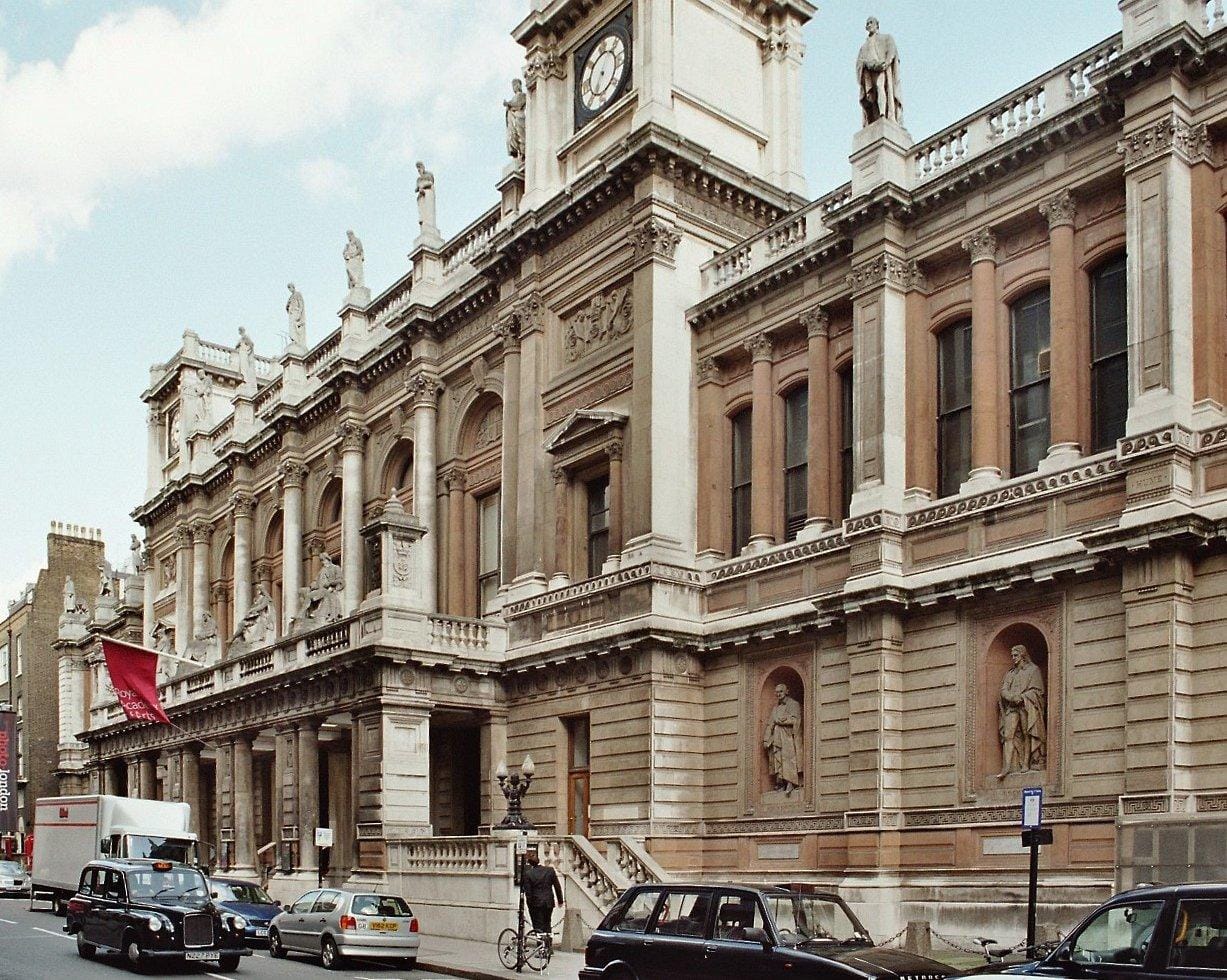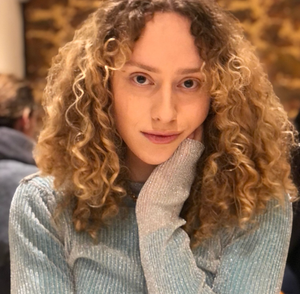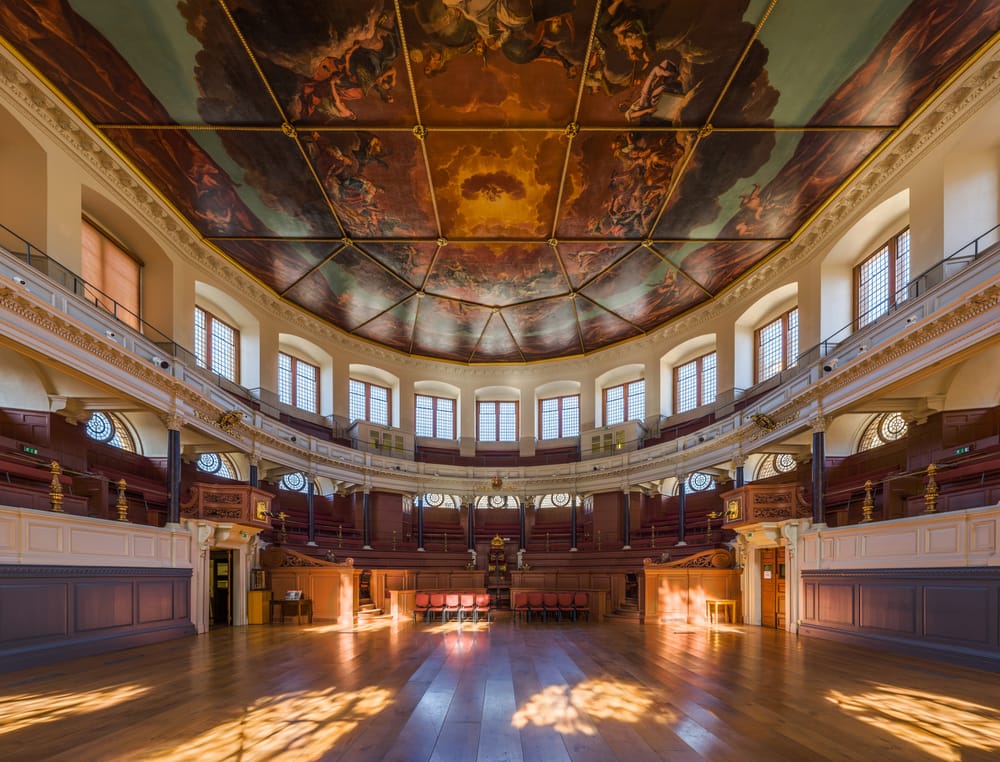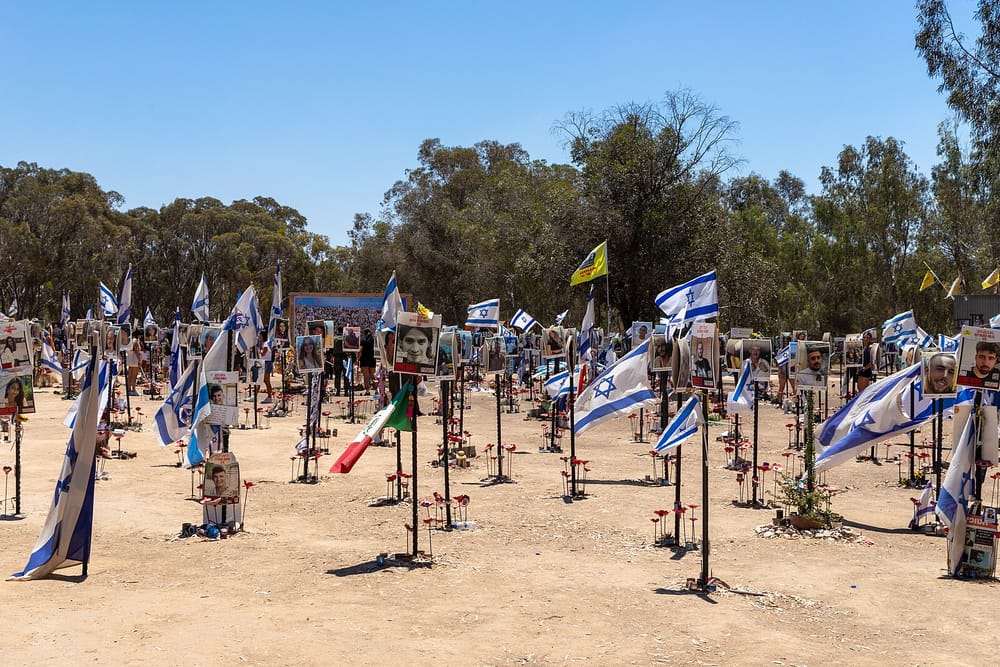Censoring anti-Zionist art isn’t free speech
If it’s diverse perspectives the Board of Deputies wants, they’ll have to accept anti-Zionist art.

This week, the Royal Academy of Art (RA) removed selected artwork from its Young Artists’ Summer show under pressure from the Board of Deputies of British Jews. Following accusations from the Board that three artworks in the exhibition contain “antisemitic tropes and messaging”, two of these pieces have now been withdrawn: a photograph by 18-year-old “Kausar” showing a protestor holding a sign reading “Jews say stop genocide on Palestinians: Not in Our Name”; and a painting by 16-year-old “Andy” depicting women screaming beneath a swastika and a large Buddha.
The Board criticised the RA for showing “no attempt to present any context or contextualising works which might express a contrary view”. An apology was then issued by the RA for displaying the two artworks, which they agreed, “with limited opportunity to provide context or discourse”, could cause “undue upset”. The arts organisation also stated that the artworks were not appropriate for the exhibition’s younger audience.
Their letter indicates that the Board believes it crucial to present a full spectrum of viewpoints with regard to the war in Gaza. We should be hesitant, however, to presume that such a statement is an invitation for anti-Zionist thought to hold space. Following the International Court of Justice’s findings against Israel in January, the Board congratulated the British government for releasing a statement that challenged the findings, reasserting Israel’s right to defend itself against Hamas. The Board appeared in that instance to have no problem with context being brushed over or obfuscated, despite evidence of over 37,000 casualties in Gaza, which, according to numerous Rights experts, is “reasonable grounds” to identify Israel’s actions as genocidal.
As such, the three artworks displayed by the RA were always going to be condemned by the Board, which has already far and away proven its commitment to Zionism. The Board has long been a defender of the International Holocaust Remembrance’s (IHRA) definition of antisemitism, which is understood by more than 100 Israeli and civil society organisations as a tool “to wrongly label criticism of Israel as antisemitic, and thus chill and sometimes suppress non-violent protest”. Indeed, in 2022, the Board described Amnesty International’s finding that Israel is committing the crime of apartheid as an attempt to “slur” the state.
The RA’s display of the painting containing a swastika is, in my opinion, uncomfortable. Understandably, the piece attempts to create links between multiple injustices: the young artist stated that they were inspired by “Watching the conflict unravel in Gaza [and how it] draws many parallels with the Nazis’ and Chinese oppression”. However, it is possible that one of the purposes, if not an unintended effect, of the swastika specifically in this context is to elicit empathy for the plight of Gazans from a global Jewish community, to whom the swastika means their annihilation. Recalling the Holocaust in this manner seems ill-judged; the majority of Jews are not directly responsible for the treatment of Gazans by Israel, and, internationally, many are taking on a collective struggle to end the genocide. We should not be uncritical of anti-Zionist art just because it’s anti-Zionist. The problem with the Board’s critique of anti-Zionist art in this instance is that it folds into anti-Palestinian discourse.
The debate regarding the extent to which Israel can and should be compared to Nazi Germany has, for decades, opened up questions about the capacity of Jews, a people with a long history of oppression, to wield power in ways that oppress other groups. The comparison can, and does for many, highlight how oppressions are interconnected. The Zionist perspective is different: this understands the comparison as an attempt by anti-Zionists to undermine Jewish peoples’ claim to a unique victimhood. Seen in this way, the events of 7 October become further, clearer proof that the Jewish people are immutably oppressed. In the same letter to the RA, the Board states that the current conflict in Gaza, though “a tragedy”, was ultimately “precipitated by Hamas”, who continue to attack Israel while using their own population as “human shields”. However, surely such a description of 7 October is at odds with the Board’s insistence on contextualisation: should the show of “context” demanded by the Board not include 6, 5, and 4 October? Should we not include each day of Palestinian oppression that led to this tragic attack on Israel since the Nakba 75 years ago?
The idea that Jews need Zionism because antisemitism is, as Naomi Klein puts it, “a primordial force that cannot be weakened or confronted”, trickles into the art world; it presents artists, including those who are Jewish, as deeply contentious for expressing support for Palestinians. The Board claims that “many Jews in the art world feel they are being marginalised and silenced for showing sympathy with the victims of the October 7th attacks by Hamas”. While such language paints a picture of a vocally anti-Zionist art world, many anti-Zionist artists, including those who are Jewish, feel a constant pressure to remain silent on the issue of the conflict.
Four years ago, British Jewish artist Tai Shani and the three other Turner Prize winners were commissioned to make a public artwork at Piccadilly Circus, near the Shaftesbury Memorial Fountain. The statue commemorates the 7th Earl of Shaftesbury, who was instrumental in the colonisation of Palestine. In response to the site’s history, the artists’ piece planned to reference this imperial history. The creation of art that cited Palestine in this way was, in Shani’s words, “flagged as problematic”. After being told that the artwork could be seen as antisemitic, the artists withdrew from the project. Reflecting on her own experience of being silenced for her opinions on Palestine, Shani wrote:
“We were given this specific site. We did not seek to draw historical connections […] This is its history”.
The Board suggests that the RA’s recent displays are representative of an asymmetrical system of power across art institutions in the UK: the freedom with which anti–Zionists can express their politics, and the restrictions placed on Zionists to express theirs; anti–Zionists can speak freely without context, Zionists cannot.
The 2019 Turner Prize nominees had aimed to create a public art piece based on their architectural environment. They weren’t trying to provide context or deep analysis of the issue; they didn’t reach that stage. Instead, their ambition was to highlight the obvious: that Britain’s history of colonialism and Zionism is evident in our surroundings. They were ultimately denied the freedom of speech to be able to do this.
It is not uncommon for artists who critique Israel’s treatment of Palestinians to lose key relationships, funding, and institutional support. Since 7 October, a global community of over 8,000 artists and scholars have signed an open letter demanding a ceasefire. As a result, some of these artists have claimed that they received “threatening phone calls and emails from their collectors and galleries”. This letter was also attacked by Israeli artists, leading some of the signatories to remove their names from the list. Others who signed had their talks cancelled and artwork deinstalled. On one occasion, an artist lost a collector after she “liked” an Instagram post about the letter. She explained: “It’s really scary to watch in real-time as wealthy collectors and gallerists try to take away our freedom of speech”. According to Hyperallergic, all of these artists and scholars spoke about their experiences anonymously to press because they felt unsafe to share their experiences and views publicly.
I, like many Jewish artists in the UK, am not convinced that the Board believes there is a legitimate way ever to be anti-Zionist; it is hard to imagine an anti-Zionist art practice that presents the Board with an acceptable justification for its existence. But, for as long as there have been Zionists, there have been anti-Zionists. And for as long as there have been Zionist artists, there have been anti-Zionist artists. Our perspectives must be heard and seen. ▼
Alexandra Diamond-Rivlin is an artist, writer and editor at Vashti.
There’s no corporation or big advertisers behind Vashti – we're a workers' cooperative and rely on small donations to keep running. Support our journalism to help break the consensus.
To donate once, click here. To donate monthly, click here.
Author

Alexandra Diamond-Rivlin is an artist, writer and an editor at Vashti.
Sign up for The Pickle and New, From Vashti.
Stay up to date with Vashti.



